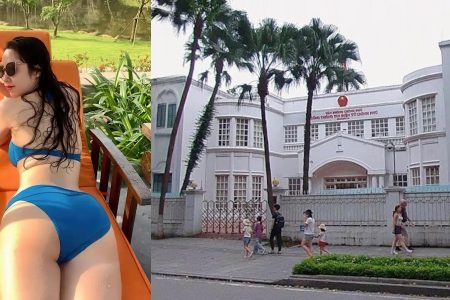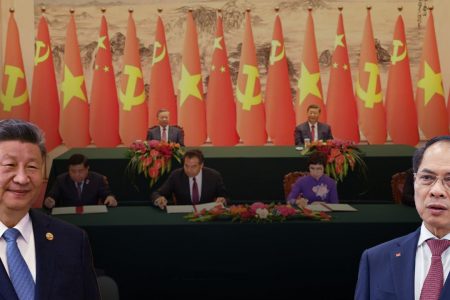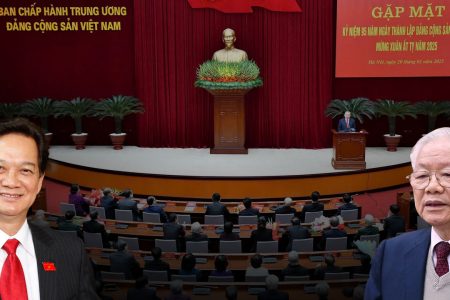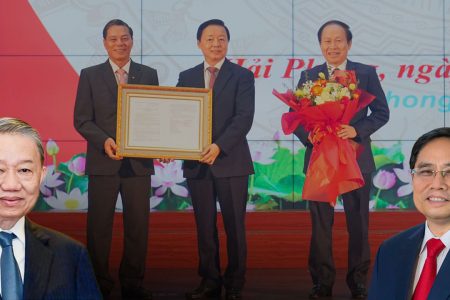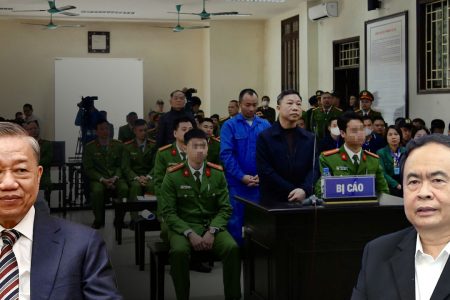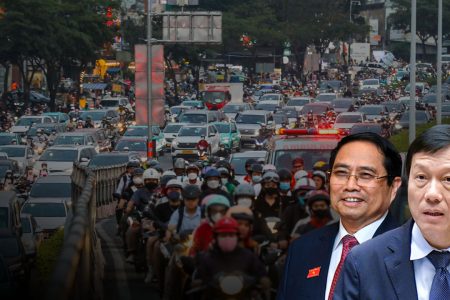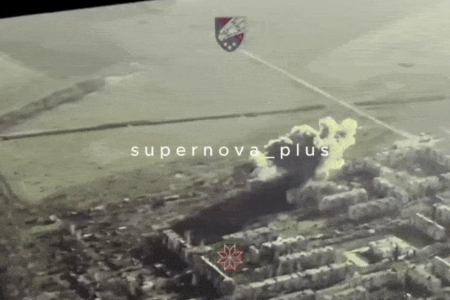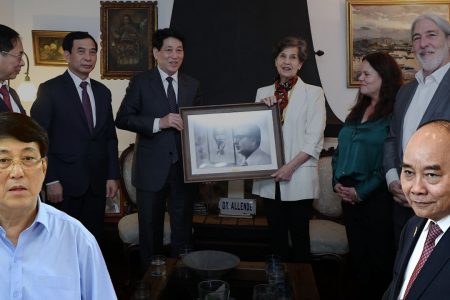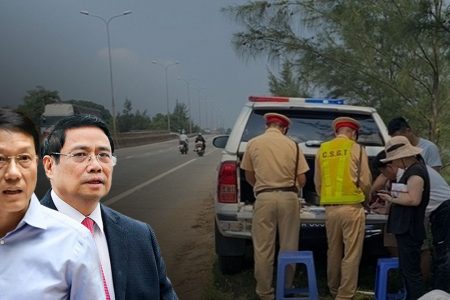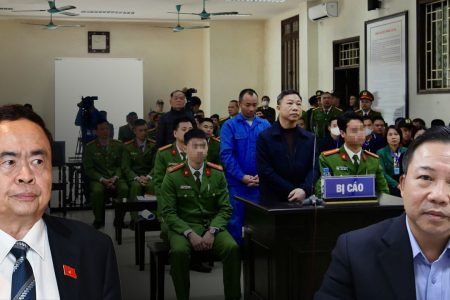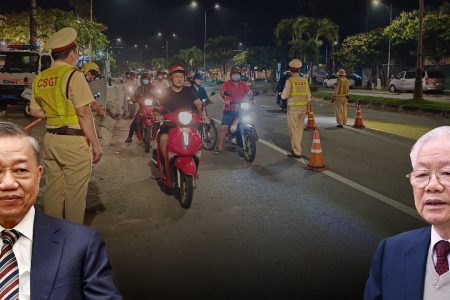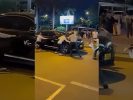
We do not undercut, fabricate, or change the history.
In the early hours of the morning of February 17, 1979, China’s authorities dispatched a large number of soldiers equipped with modern weapons they had at that time to blatantly attack all the borderlines of the six Vietnamese northernmost provinces.
To attack and invade Vietnam, the Chinese authorities mobilized 60,000 troops (not including the civilians of the service line), using 9 main corps and a number of independent infantry divisions (total 32 division), 6 tank regiments, 4 divisions, and many artillery and anti-aircraft regiments… with the focus on Vietnamese provinces of Lang Son and Cao Bang. In addition, the Chinese army also carried several hundred aircraft, and a number of ships of the South China Fleet were ready to fight when needed.
This was the largest Chinese military mobilization since the Korean War (1950-1953).
On the Vietnamese militia side, since the majority of the regular corps (3 out of 4 corps) were fighting in Cambodia, defending on the border with China had only a few main divisions of the military zone of Military Zones I and II with local army units in the province and district, armed police (border guard) and militia. The most elite Vietnamese forces stationed on the Vietnam-China border are Division 3 (based at Lang Son) and Division 316A (based in Sa Pa), in addition to Division 346 at Cao Bang, 325B in Quang Ninh, 345 in Lao Cai, 326 in Phong Tho, Lai Chau. Division 346 was based in Cao Bang for many years, mainly doing economic duties, the training time was not much …
The Chinese invasive war against Vietnam
The Chinese invasion of Vietnamese territory began on February 17, 1979, and ended on March 16 of the same year. The one-month invasion can be divided into two phases: the invasion phase and the retreat phase.
Invasion phase:
*. Period of 17 days (from February 17 to March 5):
February 17 – February 19: China attacked the whole border over 1,000 km long, occupying a number of predestined positions in Vietnam.
February 20: China occupied Lao Cai town and Dong Dang commune.
February 21: China occupied Cao Bang town
February 22: China occupied the Bao Loc commune.
February 23: China occupied Ha Giang town.
February 24: China occupied Cam Duong commune.
These days, the Vietnamese soldier and people steadfastly fought to protect every inch of the country. The fighting was especially fierce in the area near Lang Son and Sapa.
March 5: China occupied Sapa and a part of Lang Son town.
On the same day (March 5), the Chinese Communist announced that it had achieved its goal, and began to withdraw its troops from Vietnam.
Vietnam announced a nationwide total mobilization.
Withdrawal phase:
* Period 10 days (from March 6 to March 16, 1979):
Since the Chinese retreated, the Vietnamese army did not organize an attack on the enemy.
– On March 5, China started to withdraw from part of Lang Son town. On March 12, China withdrew from Dong Dang.
– On March 7, China started to withdraw from the Lao Cai area. On March 13, all of them withdrew
– On March 7, China started to withdraw from Cao Bang, on March 14, all of them withdrew.
On March 7, Vietnam announced that in a “goodwill for peace, “Vietnam would allow China to withdraw.
Despite announcing their withdrawal, the Chinese still brutally massacred the Vietnamese people, such as the March 9 massacre at Dong Chuc village, Hung Dao commune, Hoa An district, Cao Bang province. The Chinese used hammers and knives to kill 21 women and 20 children, seven of whom were pregnant, and threw their bodies into wells or cut them into pieces and threw them to the sides of the stream.
During the retreat, the Chinese army also systematically destroyed all the construction works, from the houses or power poles, in the towns, town of Sapa, Dong Dang, Lang Son …
On March 16, 1979, the Chinese authorities announced the completion of the withdrawal, and the war to invade Vietnam ended.
Casualties statistics:
*. Data from researcher Duong Danh Dy:
An official Taiwanese statistic shows that the number of deaths on the Chinese side is 26,000; 30,000 people on the Vietnamese side.
The number of injuries: The Chinese side has 37,000 injured soldiers. The Vietnamese side – 32,000.
Regarding the number of detainees, the Chinese side is 260 people. The Vietnamese side is 1,600 people.
*. Data from other sources:
– According to historian Gilles Férier, there were about 25,000 Chinese soldiers killed and nearly 500 armored vehicles or artillery destroyed, the Vietnamese number was similar but a bit lower.
– Russell D. Howard said that the Chinese suffered 60,000 casualties, of which the death toll was 26,000, and some other sources also agree with the Chinese casualties at least 50,000.
– King Chen’s source said that there were at least 30,000 Chinese wounded soldiers in major hospitals in Guangxi alone.
– According to Time magazine, the Vietnamese side had less than 10,000 soldiers killed and thousands of civilians killed by Chinese soldiers.
During the war of invading Vietnam in 1979, the Chinese army completely destroyed 4 towns, more than 20 communes, 735/904 schools, 428/430 hospitals, many villages, factories, mines, farms, bridges, roads, houses … of the Vietnamese people in places where they passed.
Post-war voices:
Major General Le Van Cuong: Memorial of the war 1979: Nothing sensitive!
“In my opinion, there is nothing sensitive here, to commemorate such a glorious victory of the nation. It is completely different and has nothing to do with inciting nationalism.
Every country in the world celebrates similarly. Japan and the US are now close allies. But for example, with the Pearl Harbor event on December 7, 1941, every year the US still celebrates and the next generation still understands deeply the disaster. And young Japanese still expressed the crime of the US when they threw two atomic bombs on Hiroshima and Nagasaki. Japan clearly states this event in the textbook and also commemorates it every year.
In Europe, young English and French … still fully understand the crimes of Nazi Germany in the period 1940-1945. All history textbook systems of the US, Japan, England … have such dark pages, while they are now allies.
For Vietnam, the commemoration of events such as the victory of Ngoc Hoi, Dong Da, the victory of Dien Bien Phu, the reunification of the country in 1975, the border war of 1979 … is for the present generations to keep in mind those who fought to protect the sacred land. And also to forge them the will to thrive patriotism.”
Former Vice President Nguyen Thi Binh: Being frankly with history does not incite hatred
“The Northern Border War is a sad historical story, a sad story in Vietnam-China relations. Even so, it is still history.
And already history, it must be acknowledged with the full truth. It is impossible not to mention February 17, 1979, the day when the Northern border war broke out; the day that thousands of our children have sacrificed themselves to protect the country’s borders. Remind our people to remember, appreciate and honor the soldiers and compatriots who sacrificed to protect the borders of our country, as we have and will still honor so many martyrs in the war of liberation. Not only our people need to understand, but the Chinese people, as well as the people of other countries, must also understand correctly: what is the truth, what is the right, and consider it a lesson. We can’t forget it.”
Professor Nguyen Minh Thuyet: Need to be fair with history!
“The 1979 border war with China was a fierce national defense war. Like all wars to protect the country, this resistance must be included in textbooks, first of all, history textbooks, because this is a part of history, effective for educating young people patriotism and vigilance in the defense of the Fatherland.
The textbook ‘Outline of Vietnamese history’ for undergraduate level has already written about this border war but the general education textbooks do not have.
Putting this content into textbooks is not to inculcate hatred or incite anti-Chinese psychology. Textbooks not only write about the 1979 border war but also about the battles at Hoang Sa [Paracels] and Truong Sa [Spratlys]. Need to be fair with history. We condemn the perpetrators of war and the brutal and despicable acts in border wars and the wars in the Paracels and Spratlys but we are not against the Chinese people.”
Major General Nguyen Xuan Thanh: Border warfare must be included in textbooks
“While Vietnam refrained from including the 1979 border war events in history books, textbooks, movies, newspapers, propaganda …, China unilaterally carried out propaganda, distorting the truth about the war when Beijing considered self-defense counterattack. That’s not acceptable.
We do not undercut, fabricate, or change history. The inclusion of the 1979 border war with China in the history and textbooks should be seen as the act of clarifying the historical truth, making it clear to the people and generations after the truth about the nature of this war.”
Thoibao.de (Translated)
Source: https://vietnamthoibao.org/vntb-cuoc-chien-tranh-bien-gioi-1979/



